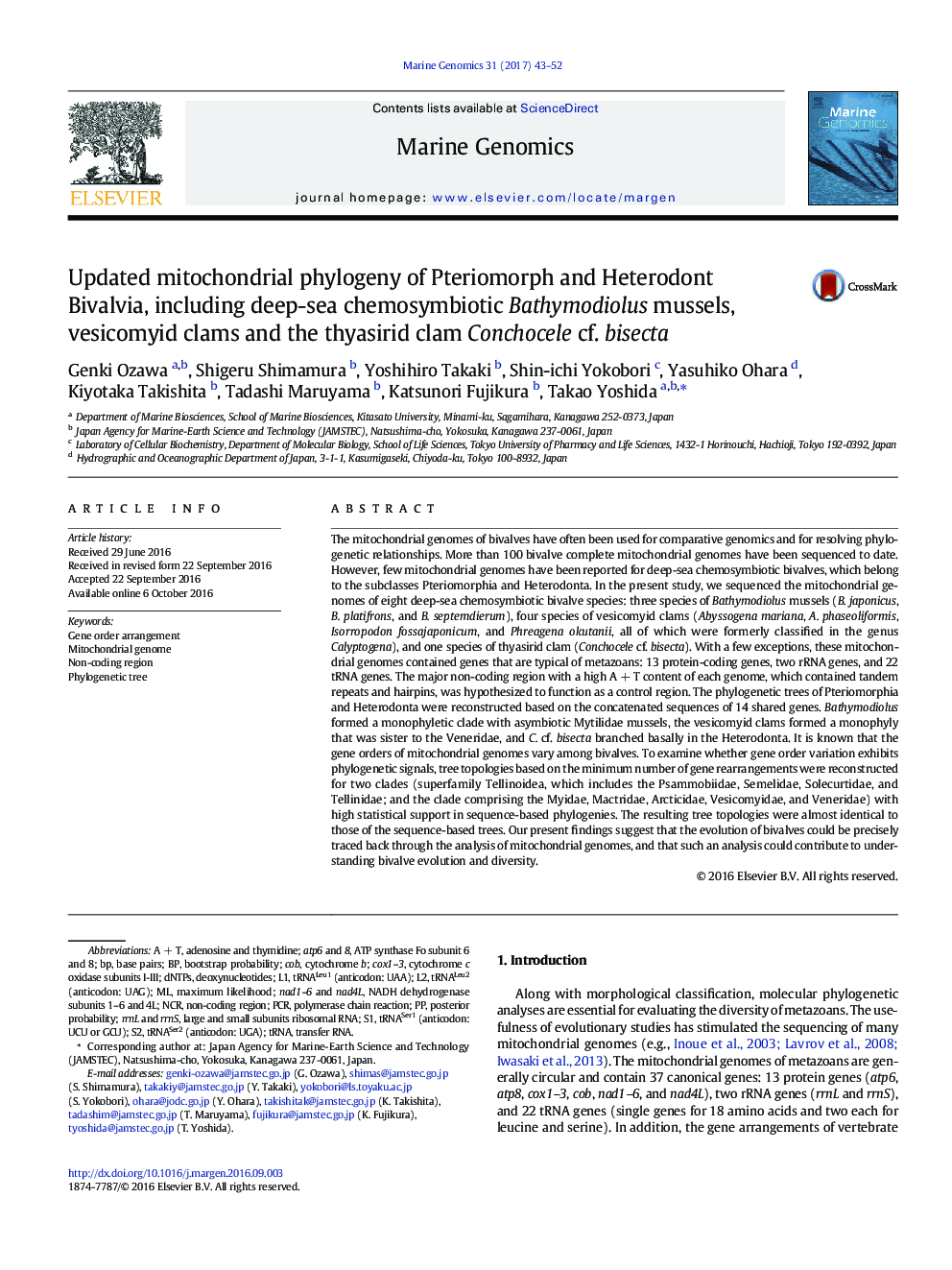| Article ID | Journal | Published Year | Pages | File Type |
|---|---|---|---|---|
| 5518262 | Marine Genomics | 2017 | 10 Pages |
The mitochondrial genomes of bivalves have often been used for comparative genomics and for resolving phylogenetic relationships. More than 100 bivalve complete mitochondrial genomes have been sequenced to date. However, few mitochondrial genomes have been reported for deep-sea chemosymbiotic bivalves, which belong to the subclasses Pteriomorphia and Heterodonta. In the present study, we sequenced the mitochondrial genomes of eight deep-sea chemosymbiotic bivalve species: three species of Bathymodiolus mussels (B. japonicus, B. platifrons, and B. septemdierum), four species of vesicomyid clams (Abyssogena mariana, A. phaseoliformis, Isorropodon fossajaponicum, and Phreagena okutanii, all of which were formerly classified in the genus Calyptogena), and one species of thyasirid clam (Conchocele cf. bisecta). With a few exceptions, these mitochondrial genomes contained genes that are typical of metazoans: 13 protein-coding genes, two rRNA genes, and 22 tRNA genes. The major non-coding region with a high AÂ +Â T content of each genome, which contained tandem repeats and hairpins, was hypothesized to function as a control region. The phylogenetic trees of Pteriomorphia and Heterodonta were reconstructed based on the concatenated sequences of 14 shared genes. Bathymodiolus formed a monophyletic clade with asymbiotic Mytilidae mussels, the vesicomyid clams formed a monophyly that was sister to the Veneridae, and C. cf. bisecta branched basally in the Heterodonta. It is known that the gene orders of mitochondrial genomes vary among bivalves. To examine whether gene order variation exhibits phylogenetic signals, tree topologies based on the minimum number of gene rearrangements were reconstructed for two clades (superfamily Tellinoidea, which includes the Psammobiidae, Semelidae, Solecurtidae, and Tellinidae; and the clade comprising the Myidae, Mactridae, Arcticidae, Vesicomyidae, and Veneridae) with high statistical support in sequence-based phylogenies. The resulting tree topologies were almost identical to those of the sequence-based trees. Our present findings suggest that the evolution of bivalves could be precisely traced back through the analysis of mitochondrial genomes, and that such an analysis could contribute to understanding bivalve evolution and diversity.
